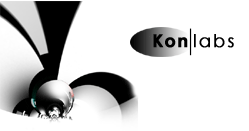
|
 |

|
 |
|
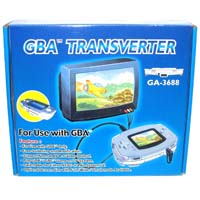 GBA Transverter Review
GBA Transverter Review
By Konstantin Khanyants
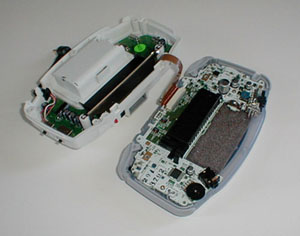 |
| Pic 1. GBA Transverter and the Game Boy Advance. |
|
|
| This is a device much like Q-Mark's GBA TV Adapter for the Game Boy Advance but is manufactured by a another company. It allows the user to view the tiny, non-backlit GBA screen on your large screen TV. Both devices were developed in Asia, where offbeat game devices and chip mods are frequently encountered throughout the area. The video quality of the Transverter is acceptable, but the image might get cropped a bit on your TV. |
|
| Pic 2. Playing Russ Prince's Bust-A-Move in Full screen mode through the composite video capture. Left: Transverter's screen. Right: GBA TV Adapter's screen. |
|
|
|
| Pic 3. Left: Unscaled video mode on the GBA Transverter. Right: Unscaled video mode on the GBA TV Adapter. Captured using a composite video connection. |
|
|
Video Quality
Although it does have it's drawbacks, namely the cropping of edges in Full screen mode (Pic 4), the Transverter's video is the only one that is stretched to the edges of the screen (Pic 2). The scaling quality in Full screen mode is slightly better than that of the GBA TV Adapter. In un-scaled mode, the GBA TV does a better job of centering the image as seen in Pic 3 (right image). However, since it stretches a little more than it should, the Trasverter's image in the un-scaled mode is larger than that of the GBA TV's, which is good. No cropping occurs in this mode. There's an error which I call the pixel holes which is present in Transverter's video when fast transitions occur as seen in Pic 5. This error doesn't happen all the time. |
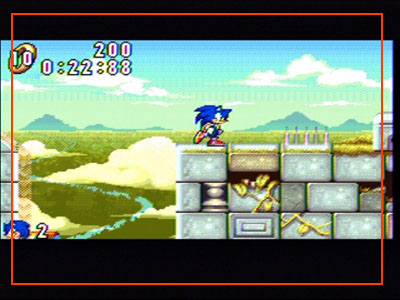 |
| Pic 4. Wide screen video mode. Unfortunately, the image is cropped to the portion within the red border if the Full and Wide video modes. I found this to be the case when using the composite video connection. If the video is connected through RGB to an RGB monitor, then the cropping doesn't occur. |
|
|
 |
| Pic 5. Pixel holes being displayed. It seems to only happen on fast moving images which vary in contrast to the background. The SEGA logo is the only sequence I have encountered which has this error so far. It occurs randomly and sometimes not at all. |
|
Video Port
The GBA Transverter features a Playstation AV port in the back. This is both beneficial and detrimental. The benefit is that unlike the GBA TV adapter the cable is not hard-wired to the console, and therefore could be detached for portable play. However, the connector is too close to the cartridge and therefore the cable has to be unplugged from the Transverter to exchange the cartridge in the GBA, unless you're playing with the GameBoy Color games which are larger and easier to grab. Even though the video chip inside the Transverter CXA2075M outputs RGB, the RGB + Sync connections are not present on the AV port. |
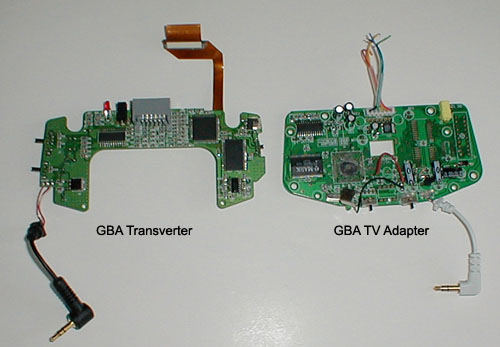 |
| Pic 6. GBA Transverter PCB and GBA TV Adapter PCB side by side. |
|
Size and Feel
As you can see, the size of the Transverter is quite smaller than the GBA TV Adapter (Pic 6). It actually makes the GBA more comfortable to hold because of the slightly added volume in the back. To compare the thickness of the two, the GBA TV adapter is like 3 Transverters and is more awkward to hold. The Transverter also doesn't seem to heat up as much as the GBA TV does. Like the GBA TV, it still has resistors on the PCB which heat up, but I think that the heat is dissipated better in the Transverter. |
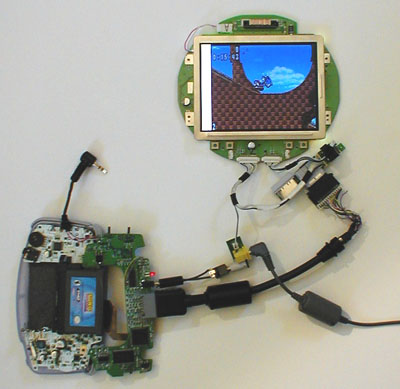 |
| Pic 7. An image of the RGB modded GBA Transverter running Sonic Advance on my gutted PSOne monitor. The vertical white crap on the screen is because the LCD was fractured in that area. |
|
Hacking the Transverter to output RGB
Originally the GBA Transverter doesn't output the high-quality RGB video signals, so I recently modified the GBA Transverter to output RGB. I was amazed to see that quality is much better than that of the GBA TV's. I tested the output on my barely working PSOne LCD monitor, and it looks great (Pic 7). Note, however, that the PSOne monitor cannot be directly attached to the Transverter through it's AV plug, a port extender must be used since the LCD monitor and the Transverter don't fit well together. The screen is stretched to the maximum in Full screen mode unlike with the GBA TV Adapter, which doesn't scale all the way and has a solid border around the image. No portions of the screen are cropped in Full and Wide screen modes as with composite video output. Also, the scaling of the screen looks better than that of the GBA TV adapter, in RGB mode, i.e. they double every pixel instead of every third pixel, so the image looks more consistent. The Transverter is definitely the one to get if you want to use the RGB connection. The modification itself was not difficult, but you must have a steady hand because you'll be soldering to the video chip directly. (Pic 8). Update (9/28/2003): I have updated the bottom picture because the Sony PSOne LCD monitor needs a constant +5Volts on the 10th pin of the connector to function properly. That line used to carry Sync, which was my mistake. I apologise if it caused any confusion. |
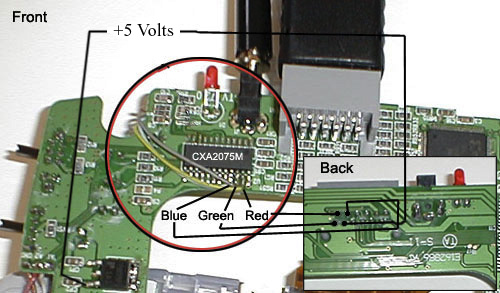 |
| Pic 8. Solder these points to make the Transverter output RGB video on it's AV connector. |
|
The Good:
- Comfortable to hold.
- Connects to any television through the PSOne AV cable by composite or S-Video input.
- No secondary attachment parts, all in one piece.
- Configure video output to PAL(European) or NTSC(North American) with a flick of a switch.
- Full, wide, and normal screen display.
- No soldering required.
- Almost, no shearing during the scrolling of backgrounds.
- Hackable to do RGB video output to an RGB capable monitor.
- Looks excellent when using the RGB connection.
The Bad:
- A bit more difficult to install than the GBA TV Adapter.
- During the installation procedure, the ribbon cable to the GBA can get detached when bent. So don't remove it once it is installed.
- In Full and Wide screen modes, the screen is scaled beyond the area of the TV and consequently loses some pixels around the edges. (Pic 4) (However, I found that taking a still picture with the Video Capture card, the image was not cropped at all... weird.)
- The replacement shell is poorly designed. I have still to take the batteries out of the battery compartment. Also, the cartridge barely fits in the slot.
- Pixel holes are sometimes displayed during fast motion and contrasting colors. (Pic 5)
- Scaling algorithm still leaves a lot to be desired. They should have used filters to create more detail in the image instead of making it uglier with linear interpolation. Still there's only so much you can do with a 240x160 screen.
- The power adapter shipped with the unit is not a US plug, but is some kind of Chinese variation. Be prepared to buy another adapter.
- The power is not shared with the GBA, so the 2 AA batteries are still necessary.
Result:
Both the GBA TV adapter and the GBA Transverter are not perfect. They both get the job done. If I had to choose, I would choose the GBA TV adapter simply because the picture quality is somewhat more stable when the composite video connection is used. I would, however, choose the GBA Transverter if I was using the hacked RGB connection, because the image is damn near perfect. I have recently exchanged e-mails about the GBA Transverter with a representative of the company that makes the GBA TV Adapter, and he said that they were going to file a lawsuit for patent infringement against the company that manufactures the GBA Transverter. So if you want to get one, get is fast before it's pulled off the shelves. I bought two Transverters from www.success-hk.com. |
|
|
|
|
 |
 |
 |
|
|
